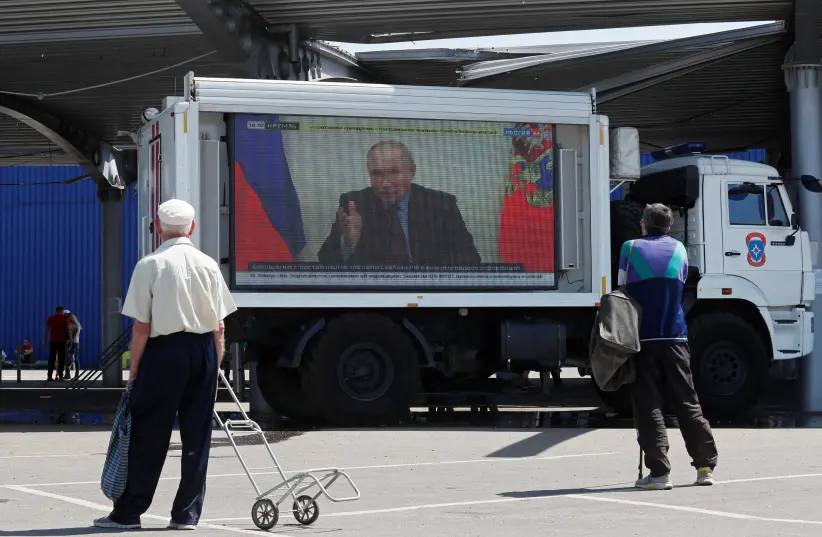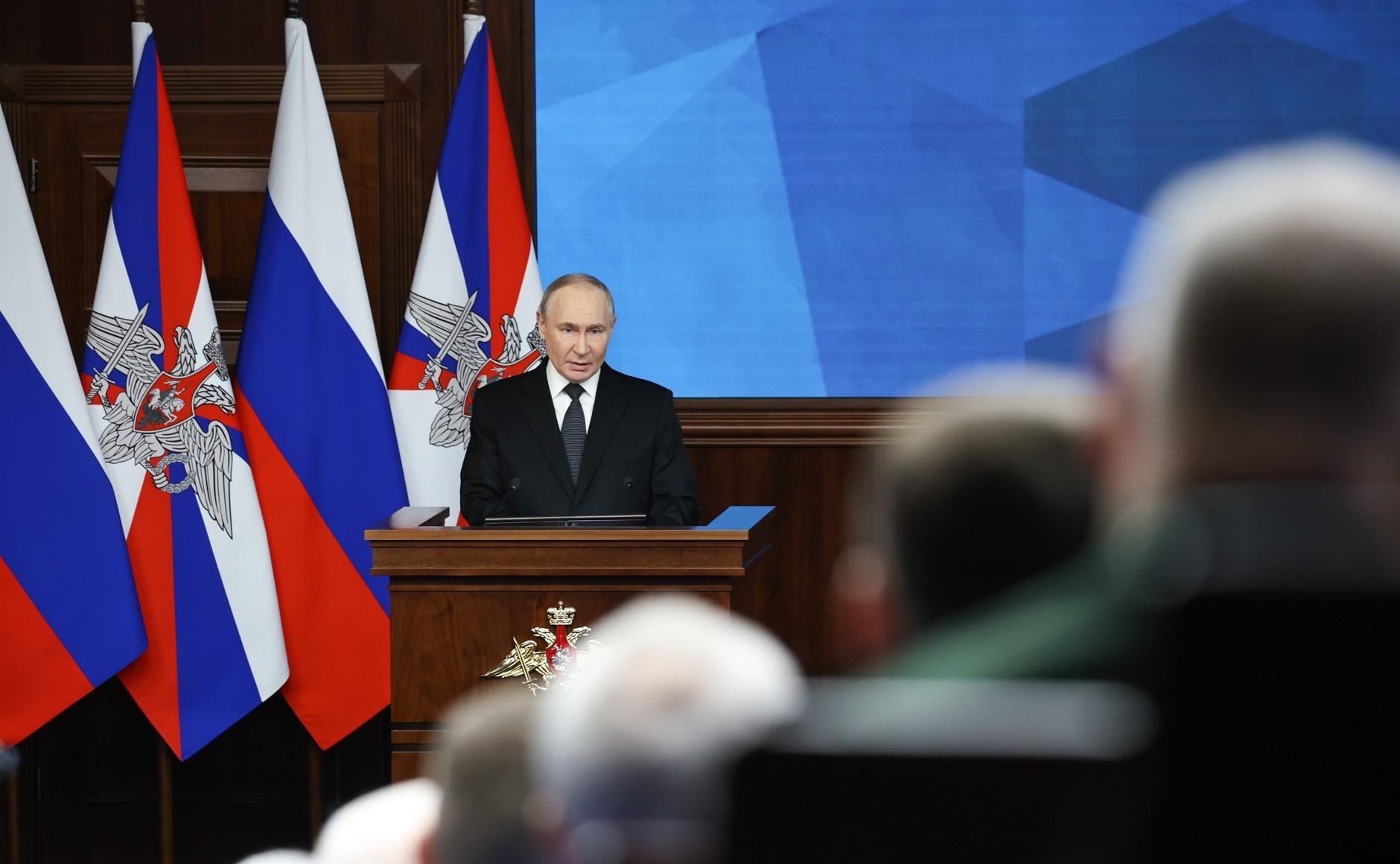
Russian Information Warfare Activities in the Temporarily Occupied Territories of Ukraine
Russian Information Warfare Activities in the Temporarily Occupied Territories of Ukraine
On June 15, several Ukrainian media outlets reported that another top Russian military officer was killed in battle (InformNapalm, June 15). This time, it was Colonel Sergei Postnov, who headed the information response group within the 1st Bureau of the National Guard’s (Rosgvardia) Media Relations Department. Since the beginning of the Russian aggression against Ukraine back in 2014, information warfare has played a key role in the Kremlin’s efforts. And Postnov’s high officer rank further underscores this fact today.
The full-scale re-invasion that the Kremlin launched in February 2022 was also accompanied by a heavy propaganda campaign. But this information onslaught became even more important for Moscow in the Ukrainian territories it has occupied since the latest hostilities began. Here Russian occupying forces have two goals—to minimize the resistance of the local population and create safe conditions for the operations of their own forces. According to these goals, Russia’s information warfare efforts can be divided into three main categories: influence on the local civilian population, protective measures for the occupying forces, and influence on Ukrainian troops.
To win the hearts and minds of the local population, Russian authorities periodically deliver humanitarian aid, with huge media coverage accompanying such events. Not all of these efforts proved successful for Moscow, especially at the beginning of the occupation; for instance, locals in Kherson refused to take aid and instead expressed their full support for Ukraine (Korrespondent, March 4). The occupiers faced similar problems during recent mandated celebrations of Russia Day (June 12) in Kherson and Melitopol. According to Oleksandr Samoylenko, the legal Ukrainian head of the Kherson regional council, the Russians needed to bus in extra individuals for their festivities to ensure an appropriately impressive crowd size for the news cameras (Radio Svoboda, June 13).
Additionally, Russia has blocked all Ukrainian broadcasting, both television and radio, in the seized portions of Kherson Oblast. Indeed, the TV broadcasting center in Kherson was one of the first administrative buildings captured when the occupation of the city started, and it began broadcasting Russian TV channels on April 22 (RIA Novosti, April 22; Radio Svoboda, April 30). A week later, the Ukrainian National Security and Defense Council’s Center for Countering Disinformation stated that Moscow had launched massive psychological operations (psy-ops) against civilians in the occupied territories to create the illusion of “life returning to normal,” to paint the invaders in a positive light, and to decrease popular resistance (Facebook.com/protydiyadezinformatsiyi.cpd, April 29). Some of the Russian-produced news footage of life in “liberated” Kherson was actually filmed in Nova Kakhovka (Kherson Region) or even Eysk (Krasnodar Region, Russia).
Same as broadcast media, local Ukrainian internet service providers in cities and towns captured by Russian forces were replaced with a Russian provider based in temporarily occupied Crimea (Deutsche Welle—Ukrainian service, June 6). This allows the occupying forces to control access to certain websites or simply block every Ukrainian information source. In fact, both Zaporizhzhia and Kherson regions are effectively cut off from the Ukrainian information space. Russians are also replacing the local Ukrainian cellular networks with their own provider, which will operate over captured equipment. With the help of deep packet inspection (DPI) technology, Russia may be able to filter locals’ access to Ukrainian news outlets on their mobile phones. New cellphone SIM cards can be purchased only by handing over significant personal data (typical practice in Russia, but heretofore not in Ukraine). This facilitates espionage and data collection that the occupying administrations will need to stage a future “referendum” on these territories joining the Russian Federation.
Nonetheless, most of the Russian authorities’ propaganda effort remains focused on television. Illustratively, among the first non-military items deployed to occupied Mariupol were large mobile TV screens (Focus, May 24). Meanwhile, a large group of so-called combat journalists or bloggers is active in the Donetsk and Luhansk regions. Among them are Semen Pegov, Aleksandr Sladkov, Boris Rozhin, Aleksandr Kots and Dmitriy Steshin; most of these individuals have ties to Russian military intelligence or the Federal Security Service (FSB) and “covered” previous armed conflicts involving Russia. Some of them were decorated by the Russian Armed Forces and openly carry weapons or participate in local military formations—mostly in the so-called “Donetsk People’s Republic” (DPR). They produce disinformation content (such as stories of Ukrainian Armed Forces allegedly shelling residential areas—Cpd.gov.ua, June 16) and glorious narratives (according to provided scripts) designed to support the mobilization process in the occupied territories (InformNapalm, June 1). These Russian “war correspondents” are additionally responsible for creating various symbols/myths of war (Site.ua, May 8) as well as use hate speech and promote the extermination of Ukrainians. Most of their reports and posts on online social networks are coordinated by topic and time of publication—a strong indication of their affiliation with the army. In most of their “reporting,” they seek to create the image of an unstoppable Russian military force, armed with the newest equipment, but not engaged in any devastation, only “liberating” people from a “Nazi regime.” Sometimes these videos are used by Ukrainian forces as a source of intelligence: there were several examples of successful Ukrainian strikes enabled by Russian “news” reports (YouTube, May 22).
Evidence exists of the active involvement of Russian psy-ops units, mostly in the Donbas and Kharkiv regions. Those efforts include showering Ukrainian troops with leaflets carrying demoralizing messages (T.me/pavlokyrylenko_donoda, April 21) or exposing them to long-range acoustic devices, like the ZS-88, playing the Soviet national anthem or proposals to surrender (Defense Express, May 19). The effectiveness of such actions is questionable. According to a Russian soldier, at least one ZS-88 system was already attacked by the Ukrainian army (InformNapalm, June 16). Psy-ops units also produce fake videos, trying to reduce protest moods among Russian Muslims and to redirect their discontent at Ukrainians (InformNapalm, June 2). Much of the fabricated footage seeks to convince viewers of the existence of “Ukrainian Nazis” (InformNapalm, May 28). Sometimes, videos or social media messages show the fake capture of some city—such as Chechen leader Ramzan Kadyrov’s May 31 announcement of Russia purportedly achieving “total control over Severodonetsk” (T.me/RKadyrov_95, May 31)—in order to impel Ukrainian soldiers to capitulate.
Despite its many weaknesses, Russian propaganda targeting the temporarily occupied territories could prove successful in the medium term if the total absence of Ukrainian news (especially regarding matters of European integration, international support, and the success of Ukrainian troops) persists. This could lead to despondency among local populations and a decreased willingness to continue to resist. Thus, it is critically important for Kyiv to find a way to deliver objective information to Ukrainians living under the occupying regime.


